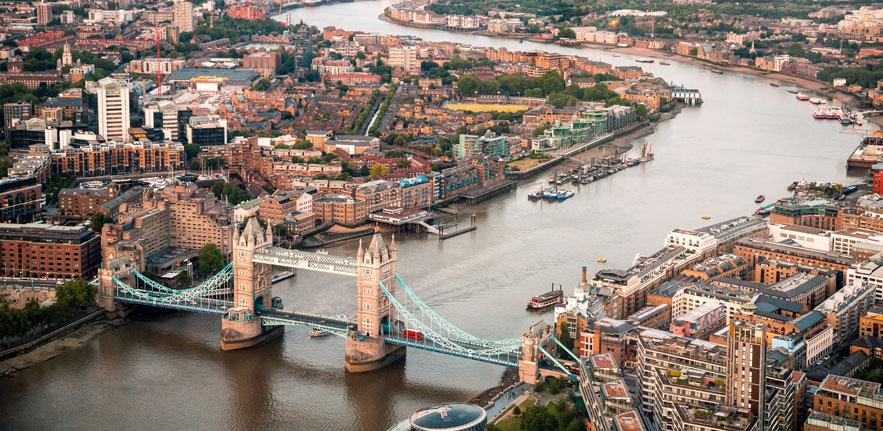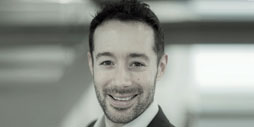
30 March 2021 – The built environment industry must challenge the notion that sustainability is ‘too hard’ to integrate. Paul Jaffe, Asset Manager at British Land reflects on his experience of the two-year Sustainability Leadership for the Built Environment (IDBE) programme and how this helped him form solutions and encourage change for investors and the wider industry.
We are witnessing an ever increasing demand for sustainable practices within the property industry from occupiers, investors, legislators and planning authorities. The more that the market demands these, the more the industry must adapt. If companies don’t also act, they are failing to future proof and risk businesses obsolescence.
I knew there was appetite for change, but that there were also challenges in integrating sustainability within the sector. After 14 years as an asset manager, creating and executing business plans for commercial real estate, I wanted to understand how I could help bridge that gap through my own role.
I needed to learn the cutting edge skills to be part of this increasingly important conversation. By deepening my knowledge of sustainability I felt it would allow me to explore how common ground could be found between investors and industry.
My employer, British Land, was increasingly being asked about sustainability, both by clients and investors. Yet as an industry there was a black hole into which sustainability traditionally fell, being perceived as too difficult to integrate.
No one would disagree with the principles of reuse and upcycling but the reality is that the design and construction industries generally follow a traditional model where throwing desks, kitchens and lights into a skip is commonplace. It’s like getting a new kitchen fitted. Most people don’t have the time or the information to understand how the materials could be reused or recycled.
In order to contribute to finding solutions of relevance to investors and industry, I enrolled on the part-time Sustainability Leadership for the Built Environment (IDBE) Master’s and Postgraduate Certificate. My dissertation explored the principles of circularity within the process of office refurbishment, or ‘fit out’, and what the financial and environmental benefits could be. I could then apply these learnings to my day job and specifically a 60,000 sq ft project I was working on.
I devised a metric to calculate the impact and using the skills IDBE gave me, how to construct a literature review, integrating areas of impact. This is something that would not normally be considered within the ‘thrown away’ system.
My dissertation and learnings on the two-year part time IDBE course helped me challenge design principles and question how much space can be reused, to avoid the creation of unnecessary waste or additional cost, in the delivery process for future customers.
In one sense the fact that I did the course as a non-technical specialist meant that I didn’t use complicated language which has proved invaluable when talking to customers about sustainability in a way they understand. Using simple language and examples of what it does and doesn’t mean is crucial.
The fact that my cohort included engineers from Singapore and architects from India, with a shared desire to deliver change, was overwhelming and boosted confidence in my ability to operate in a different way.
An emphasis on examining what levers could be pulled and on soft skills were maybe even more important than anything I learned from a technical perspective. Presentational skills, messaging and mission statements, inclusivity and respect were aspects that were absolutely relevant.
Over the last year, I have seen it move from an appendix question to a central tenet of some clients decision making process. Since completing the course I’ve found that sustainability can provide that touch point between investors and constructors especially as they are becoming increasingly aware of its relevance.
It’s not a happy ever after story though and there can be reasons, in some cases, why this might not work in principle, but it’s comforting to have the confidence to push the agenda and also engage management so they can clearly understand the financial benefits and environmental incentives attached to the way we deliver space. My hope is that this will lead to fundamental changes in design principles and briefs.
Following the course I took on an additional role delivering sustainable processes and practices within asset management to the wider business that historically had very little involvement within this area. British Land now has another 180,000 sq ft we’re looking to lease and I am working out the level of refurbishment required using the skills IDBE taught me.
It’s the start of an exciting and timely journey to drive change.
Read more about the impact that the Sustainability Leadership for the Built Environment (IDBE) Master’s and Postgraduate Certificate have had on our alumni.
More information on the programmes is available here. You can sign up for a Sustainability Leadership for the Built Environment (IDBE) virtual open day webinar here.





